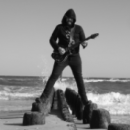Search the Community
Showing results for tags 'mix'.
-
Hi! I have a question. I would like to connect my Helix directly to my mixer and than to my headphones IEM or wedge. Sometimes sound from engineer console to my wedge or IEM is bad.. Eq is terible. So I thought maybe I can take only band mix (without my guitar) from sound engeener into my 1th channel in mixer and in 2nd channel I can plug my Helix from headphones out? Than mix this two channel and that is done. My band and well sounding presets from helix :D Will it work? There're be no input lags between my Helix and global console? I use two XLR outputs so better to use is 2xXlr and headphones out or maybe 2XLR and left 1/4 jack? Thanks for your reply or various tips :)
-
I just bought the HX Effects and noticed that the delays and reverbs cut a lot from my dry signal past the 50% mark of the Mix control. Is there a way to get the Wet signal to be a bit louder without eating up my clean signal? Kind of what a Boss pedal or an analog pedal would do. Thank you!
- 3 replies
-
- hx effects
- mix
-
(and 3 more)
Tagged with:
-
Hi there. I have a Helix Floor, an sm-58 and an FRFR Headrush 108. have a gig coming up playing some 80's power ballads, with a questionable sound person : we have 3 vocalists in the bare minimum power trio + singer band. I know that you can have parallel paths for guitar/microphone. My question is, from experience, what can I do to simplify the sound person's job, and make my on-stage experience better. For example: 1. Should I mix in my vocals into the signal that goes to the FOH 2. Not mix in my vocals, but run my mic through the chain and out the FRFR 3. In general, what should I provide as outputs: e.g.: left XLR is vocals and right XLR is guitar? Just wondering what works. In theory, I know my options, but in practice, that's another story. Thanks in advance.
- 6 replies
-
- frfr
- microphone
- (and 4 more)
-
Connected to my Helix are my monitors (XLR) and my PC (USB). So, if I play a YT video on my PC it will come out of my monitors. So far, so good. However, the guitar's volume is blisteringly loud. What would be the best way to get the guitar's volume down (regardless of patch used) without touching the patches as I've already set their volume during rehearsals, and without touching the PC's volume? In other words, how do I get the guitar's volume down in the mix?
- 9 replies
-
- helix usb interface
- volume
-
(and 1 more)
Tagged with:
-
Hello people! I have a POD XT PRO rack, and i want to know if its possible to mix a clean signal with a pedal distortion of the unit, with this i mean that i want to hear the clean signal of my instrument and at the same time i want to hear the pedal distortion effect engage so the result will be my guitar in clean but with the distortion of that clean signal happening at the same time i play, like blend it, is that possible? and if so, how can i do it?
- 2 replies
-
- blend sounds
- mix
-
(and 2 more)
Tagged with:
-
I use my floor helix for my guitar, for second guitar in band and for vocal So, in my presets I have 3 paths, my go to main 1/4 outs, second guitar to send 1+2 and vocal to main xlr outs This allows to controll all volume from mixing desk Also I use headphones Yesterday I tried powercab in music shop via l6 linl And I discovered, that I need to change this destination of paths from XLR to All outputs or digital to hear any sound So, can I just get all paths sound, keeping it separated outputs, via l6 link?
-
I play my pod directly into my amp, using only a few effects and completely bypassing the Pod's amp model. My signal flow can be seen in the attached image. As you can see, the signal splits into stereo between the null amp block and mixer. If I'm playing directly into my amp stack, should I only use one of the 2 signal paths by centering it and muting the other one in the main mix window? Or should I keep them hard panned like in the picture? Will there be a difference in sound coming out of my cab? Thanks Edit: I dont think the image uploaded properly. The signal is mono throughout my pre effects chain, then splits into two separate paths between the null amp block and mixer, then returns to mono out of the mixer into the null FX blocks.
-
- signal flow
- mix
- (and 4 more)
-
Hi, I have recently acquired a line 6 M13. It's great and saving me a ton of wedge not buying individual pedals (for the moment). One thing I want to do is blend the OD/Dist/Fuzz signals with my dry signal so i'm getting Boss LS-2 in the next couple of days so i can stick the M13 in a in on the loops and blend. This however causes me an issue with the effects I would want to run fully wet (synth patches/filters etc). Current signal: Bass > M13 > Laney RB9 (which has a series effect loop) Best guess proposed loop: Bass > LS-2 (a+b mix setting) >M13 (in one LS-2 loop) > LS-2> Amp My question: Is there a clever way i could link these 2 units using the M13 effects loop and/or my amp effects loop to isolate the just one(more more) bank of effects to be blended with the rest wet? I want the flexibility but without having to change cables between songs. Caveat: I'm new to all this multi effect wizardry, so be gentle. Thanks for your help Cheers
-
I feel like I am probably missing something really obvious here but can anyone shed some light on why 'side-chaining' reverb and delay blocks on their own route on a mono signal path by using the split/merge blocks seems to sound different than having the signal pass directly (serial) through the reverb and delay blocks and using their 'Mix' parameter to control the amount of reverb and delay in the signal? When I use the side-chain method I tend to set the 'Mix' parameter on the reverb/delay blocks to 100% (wet) and use the split block to control how much of my signal passes through the reverb/delay before returning to the main signal path and ultimately back via the merge block to my main signal path and the output block (reverb/delay are the last blocks in my signal chain on the 'B' route). It would seem to me that basically these two approaches should yield essentially the same result with the main difference being that with side-chaining I am using adjusting the mix on the split block instead of using the 'Mix' parameter on the reverb/delay blocks. If the reverb/delay mix is set to roughly the same amount of reverb and delay I would think these two approaches would yield roughly the same results but they sound very different to me.
- 4 replies
-
- side-chain
- reverb
-
(and 2 more)
Tagged with:
-
It is a very easy thing to do that really sets your tone ready for mix: After the amp, add a mid focus EQ and put HP FREQ:20% HP Q:0% LP FREQ:92% GAIN 0-14% (depends on the amp) It will give you a much better tone for all amps except: DOOM, ACOUSTIC, JCM 800(Old). Try it, and let me know what you think.
- 11 replies
-
- pod hd improve
- improve
-
(and 4 more)
Tagged with:
-
I thought I might be able to maximize the use of some buttons by creating a few patches that have fx assignments doubled up on a single button. For example, Chorus and Flanger assigned to FS1 so that you can toggle between the two. Then I assigned the expression pedal to control the mix from 0 to around 75%. The problem I am seeing here is that, with the expression pedal all the way back at 0%, I can still hear a slight chorus effect (or flanger) when, technically, it should be bypassed at 0%. Any thoughts or suggestions are welcome. Sorry if this has been previously covered.
- 6 replies
-
- fx loop
- expression
-
(and 1 more)
Tagged with:
-
I run 2 main drive patches in my band, both pretty basic. The first one uses a Park model with moderate drive which works really well. My problem is that in a live situation my other main patch which is a Park with Tube Drive gets lost in the mix. I think the problem probably lies in the mids but I'd be really interested if anyone has some tips and/or settings using some of the HD500 EQs to cut through. Also, if you use an EQ where in the chain do you put it? Thanks guys.....
-
I would like to use StageScape Mixer for recording and mixing of band rehearsal. I have pair of studio speakers and pair of power speakers. I would like to have both playing stereo main output and I need to be able to mute one pair of speaker. For mixing I want to use studio monitors, for recording I want to use power monitors without studio monitors. In some cases I want both playing same stereo mix. I use auxs for power monitors, but this is not in stereo and I cannot control volume of both power speakers at once as main input. It would help if I can send main signal to pair of auxs and control it. Is it possible? Thanks Honza
-
Vetta II Post Delay Mix Issue On some patches with POST DELAY active, you will notice that if you turn DELAY off/on, the perceived mix will jump to %100. Please follow the steps below when the problem patch is active to resolve this issue: Select FOOT CONTROL. Scroll to Page 4 that say PEDAL 1. Use the black knob under DEST to assign PEDAL 1 to a different parameter (an fx you are not using on the patch), Go to page 5 and if PEDAL 2 is set to POST DELAY MIX, follow the same instructions above. Select SAVE twice to save the changes. Gain/Drive Reversal When Using Line 6 Edit Drive and gain for distortion effects are reversed when loaded into Line 6 Edit: After loading a tone or changing the model selection, the drive and gain values for distortion effects are reversed when comparing the amp display to Line 6 edit. When adjusting the drive or gain using Line 6 Edit or the amp, the correct control moves and jumps to match the value of the one you are moving. This effects all distortion effects, and also happens when loading a tone.
-
Q: Can I go direct from the Vetta to a recording console or PA system? A: Yes,the Vetta II can be used with or without speakers in a studio or live performance application directly through the board. Page 4.32 of the Vetta II Pilot's Handbook it describes how to turn the outside speaker cabs off in order to use the head to run direct. The second page that comes up from the Output Setups button lets you turn both the internal and any external speaker cabs off. When you have turned the speakers off, the Master Volume Control sets the level for the direct outs. Q: How do I hook up an external effects processor to my Vetta? A: While we've tried to anticipate all of your effects needs, you may still want to use other effects with Vetta. That's okay, we won't be upset. Obviously, if you've got actual physical world stompboxes you want to use, run them in front of Vetta as you would do with any other amp. If you've got rack mount effects or other devices that work at line level, these can be hooked up in Vetta's effects loop. This loop is switchable (from the front panel or from the FBX foot controller), the on/off state is remembered with each channel that you save, and you can even route the loop either series or parallel. To hook something up to Vetta's loop, you'll need a pair of what are commonly referred to as 'Y' or 'insert' cables. These cables have a 1/4-inch TRS (Tip, Ring, Sleeve) plug on one end, and that splits out to a pair of 1/4-inch TS (Tip, Sleeve) plugs at the other end. You'll need one of these for Vetta's loop send, and one for the return. An effect insert uses these cables to allow input and output signals to both be connected at the one jack. If Vetta had an effect insert (like many mixing boards do), you'd jack the TRS end of a single one of these cables in this insert, then one of the split ends of the cable would go to the effect's input and the other would go to the effect's output. But as the picture shows, we're not doing that. Once you've got your external effects hooked up, press the LOOP button as needed to get the loop turned on. The next step is to set up the send and return levels for the loop. Press the Edit button. If the Loop page isn't showing already, press the Loop Button and it will be. You'll see something along these lines: The left most knobs, labeled Amp1/L Send and Amp 2/R Send control your signals differently depending on how your loop is routed. You'll want to check out Effect Routing on page 4.17 of your manual in order to get your loop properly set for the particular sonic madness you have in mind. When the loop is first in the chain of post effects or in any parallel routing, the loop sends are getting signals from the discrete outputs of Amp 1 and Amp 2, regardless of how the amps are panned. When it's not first in the post effects signal path, routed in series or chain, the sends are from the left/right outputs of the previous effect. When the loop is routed parallel or chain, set the mix control on the effect in the loop to 100% wet. Use the Return Mix knob on the display shown above to determine how much of the effect you want to hear. If you instead try to run your external effect at something other than 100%, you'll get a bad sonic experience known as 'comb filtering' to audio engineers if the external effect unit is digital, and you'll get your stereo signals collapsing to mono if your external effect unit sums its left/right inputs to mono (as many effects processors do). When the loop is routed series, use the mix control on the effect in the loop to set the mix. No worries about comb filtering here, but if your effect unit sums its left/right inputs to mono (often, the 'direct' signal is summed, even when the 'effect' part of the signal is stereo) then the fancy panning you set up on Vetta may be lost when you hit a chord. Q: What will happen if I connect a mono effect pedal to effect loop of the Vetta Combo? A: The effect from the mono pedal will only effect the "left" side of the signal when panning the signals hard left/right. We reccomend panning the center for both channels if you plan to use a mono effect in the stereo effect loop. Q: How can I get my Heilsound Talkbox plugged with a Vetta Combo? A: In order to use Heil Talkbox with the Vetta, connect a speaker cable from the Vetta's Left Speaker Outputs to the input on the Talkbox. Next, you'll need to customize the speaker leads connected to Vetta's left speaker. Basically, you'll need a cable that has a 1/4" speaker jack on one end (tip +, sleeve -) and two, crimp terminal clips on the other. Connect the 1/4" speaker jack to the Talkbox output and the two, crimp terminals to Vetta's left speaker. Make sure you keep track of which clip is positive and which clip is negative and make sure they are connected to the speaker correctly. If the sound coming from the speaker seems to be strange, you may need to reverse the clips. Connect the Talkbox tube and your microphone to your P.A. (or second amp) as instructed in the Talkbox manual. When connected in this manner you will hear the Talkbox coming out of the P.A. speakers (or second amp) and the amp's normal tone coming from Vetta's right speaker. If you want to mute the amp's normal tone and just hear the Talkbox, you will need to pan the Vetta's amp models all the way to the left, in the Vetta presets that you will be using with the Talkbox. This can be done via the Amp/Cab Details menu, Page 2, Amp Only knobs.
-
Have you ever had this happen to you? You've spent the afternoon getting all your sounds perfectly tweaked for tonight's gig, but when you get there and start playing, everything sounds really..... not right? Things sound overly bright, but also a little 'woofy', so you have to fix things on the fly as the night goes along and silently curse your amp. The next day, when you set things back up at home, you go back to re-tweak your sounds, and suddenly they sound okay again. Are you going nuts? Have your ears suddenly lost it? Is there a problem with your amp? Don't worry, they're both fine; you've just been bitten by the Fletcher-Munson curves. "What's this?", you ask. "I thought Thurman Munson was a catcher for the Yankees, not a pitcher, (although he hit the curve pretty well) and who the heck is this Fletcher guy?" Well, aside from the fact that the baseball trivia part of your brain is functioning just fine, there's a whole other story going on here. Although it may look a little daunting (especially that graph you see looming below), it's really pretty simple, so just bear with us a moment for the inside poop. Fletcher and Munson were researchers at Bell Laboratories who demonstrated, in 1933, that the human ear (and brain) perceive different frequencies in a shifting manner dependent on level. Their measurements showed that your ear is most sensitive to frequencies in the range of 3-4kHz, and that frequencies above and below those points must be louder, in absolute terms, in order to be perceived as being of equal loudness. They also showed that the amount of increase of loudness in those other frequencies to achieve that perceived equality varies depending on what the overall SPL (Sound Pressure Level), or sound intensity, is in the first place. These discoveries helped kick off a whole new area of study called 'psychoacoustics' and brought you, among other things, that little button on your stereo labeled 'Loudness'. When they mapped our these curves (also known as 'Equal Loudness Contours') they looked something like this: When you look at these curves, you'll notice that when the 3-4 kHz range is at 0dB (or just barely audible), frequencies at 20Hz (about as low as you can perceive a distinct tone) have to be raised over 60 dB (which is 64 times as loud. Remember that decibels are measured on a logarithmic scale, so this is also 1000 times the power) to be perceived as being the same volume. On the other hand, when the base level for our 'home' frequencies is raised to 80dB, the lowest frequencies only have to be raised 10dB (or be twice as loud) to be perceived as being the same volume. Now what does this mean to you as a guitarist? Well, as we alluded to above, you'll notice that the curves flatten out substantially as you get louder. This means that the sounds you tweak up in your living room will have the low and high end boosted substantially (the infamous 'smile curve') to make those frequencies sound equally loud to the midrange frequencies to which you're most sensitive. When you take those sounds that you designed at around 60-70 dB (which is your basic living room, not gonna wake the neighbors or overly annoy the family level) and turn them up to the average 90dB+ stage levels, those same high and low frequencies will suddenly seem overly exaggerated making everything sound simultaneously painfully bright, yet woofy (kinda like a bad wine tasting description). Not only that, but those midrange frequencies (where the fundamental information about just which note you're playing live) are being overwhelmed by that, now excessive, high and low frequency information. So what's a fella to do? Well, if you can manage it without driving everyone crazy, studies have determined that the optimum level for reference mixing (which would apply to sound design as well) is about 85dB. This is loud enough to start flattening out the curve, but not so loud as to seriously hurt yourself (unless you do it for 14 hours straight) Get yourself an inexpensive SPL meter, set it to 'A' weighting (which shoots for the equivalent of the human hearing sensitivity) crank up your amp so you're averaging 85dB, and tweak in your patches. Of course, 85dB is, to put it in easily understandable terms, 'pretty darn loud', so this isn't something you can do a 2 AM when you can't sleep 'cause you're worrying about sounding just right for the next gig. The next best thing is to schedule a rehearsal with the rest of your band where you can crank it up, and make your final tweaks while the rest of the guys are there cracking jokes about obsessive/compulsive guitarists. Your third option, and probably the easiest, is to study the curves above carefully, and remember that if your sound is a little mid-heavy and seems a little bit dull at living room level, it's probably going to be about right when you crank that sucker up live. Here's a potential approach. Next time you're tweaking up a tone or two, make two versions; one that sounds right at living room levels, and one that you think, using the stuff you've learned here, should sound about right at stage levels. When you play live, leave the first one alone, and tweak the second one (if necessary), then go back the next day and compare the two. Pay attention to how they differ from each other. Now try and make a couple more, using the same process. After you've done this a few times, you should be getting a pretty good feel for just what you'll have to do to get 'em right the first time. Presto, you're one step closer to that elusive Ph.D in Tone. Now, if you're the type that really wants to dive in and get some serious information overload, you might want to try going here. This is one of the coolest online reference sites we've found in a long time, courtesy of Campanella Associates, an acoustic consulting firm. It's a fairly complete audio text and tutorial, that will give you more than you thought you needed to know (but not more than you should) about audio, acoustics, and sound.






